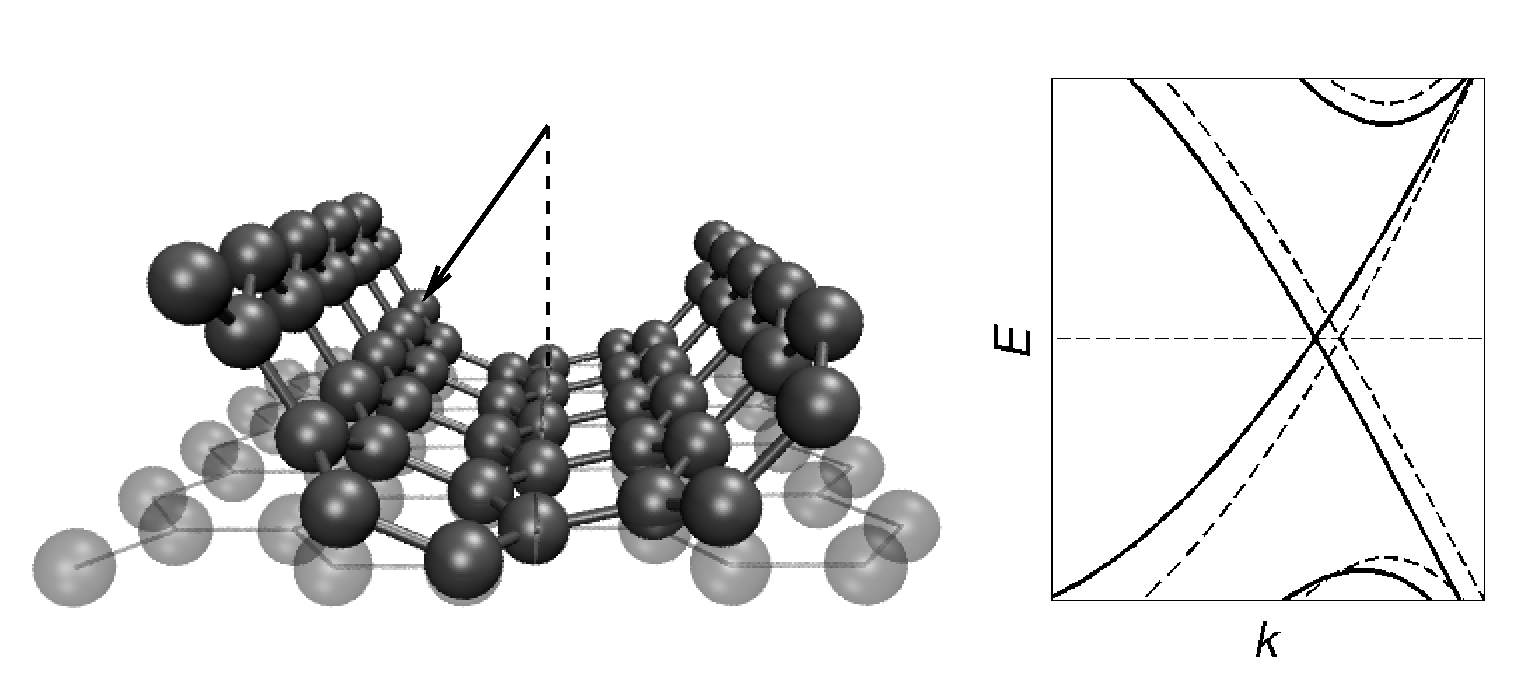The zone-folding method is a widely used technique in computing the electronic structure of carbon nanotubes. In this paper, curvature effects of boron and carbon nanotubes of different diameters and chiralities are systematically quantified using the density-functional-based tight-binding method. Here, the curvature effect in a nanotube is defined as the difference between the one-dimensional band structure calculated from the tubular atomic structure and the band structure calculated from the related two-dimensional sheet with the zone-folding method. For each nanotube, we quantify this difference by calculating the standard deviation of the band energies σE and the maximal relative deviation between the derived ballistic currents δImax. For all considered nanotubes with diameters d > 2 nm, the standard deviation σE is below 60 meV and decreases only slowly, whereas δImax is still as large as 8% and does not tend to zero for large d.

The zone-folding method is a widely used technique in computing the electronic structure of carbon nanotubes. In this paper, curvature effects of boron and carbon nanotubes of different diameters and chiralities are systematically quantified using the density-functional-based tight-binding method. Here, the curvature effect in a nanotube is defined as the difference between the one-dimensional band structure calculated from the tubular atomic structure and the band structure calculated from the related two-dimensional sheet with the zone-folding method. For each nanotube, we quantify this difference by calculating the standard deviation of the band energies σE and the maximal relative deviation between the derived ballistic currents δImax. For all considered nanotubes with diameters d > 2 nm, the standard deviation σE is below 60 meV and decreases only slowly, whereas δImax is still as large as 8% and does not tend to zero for large d.
